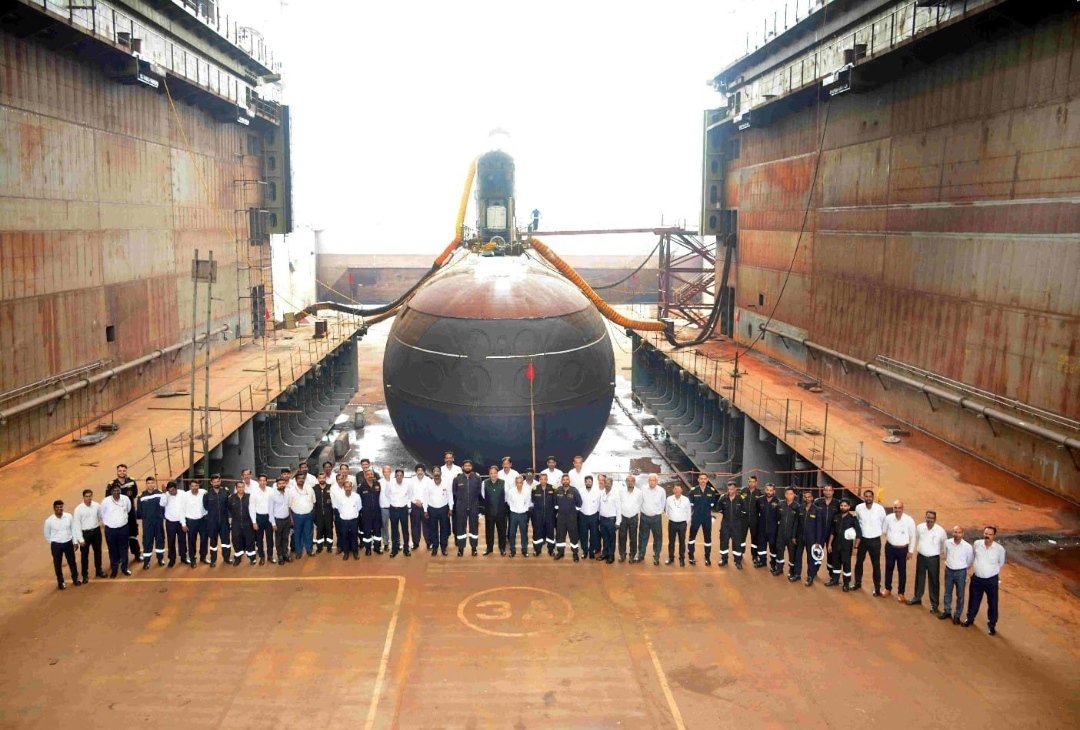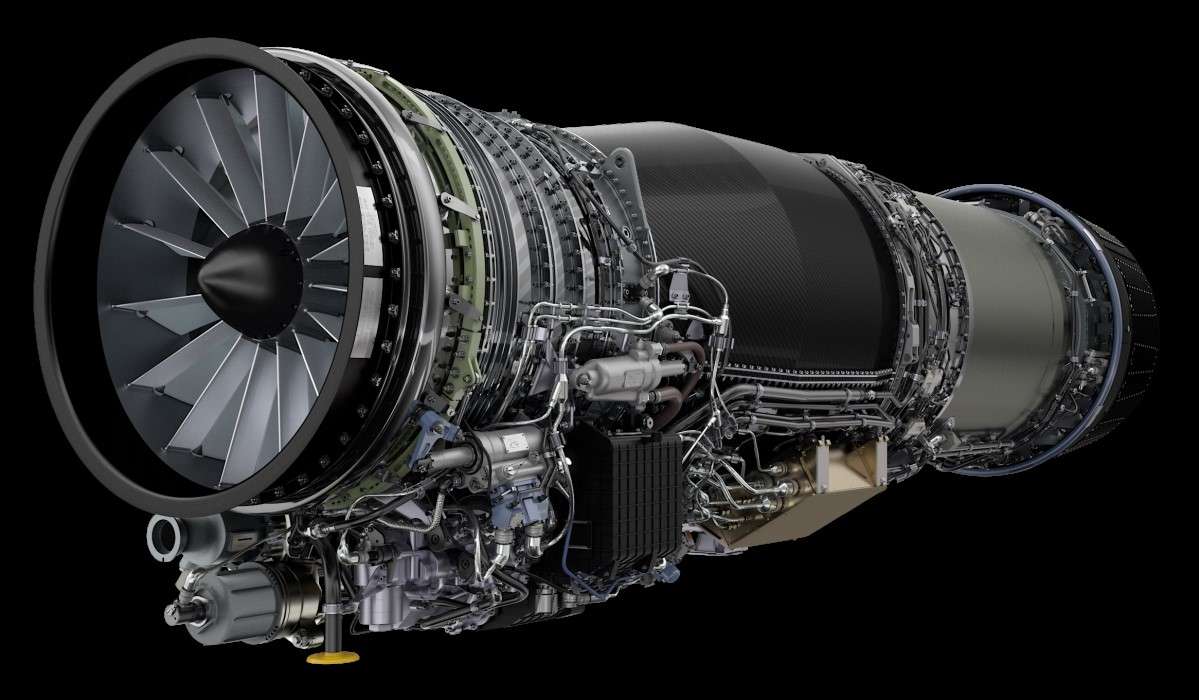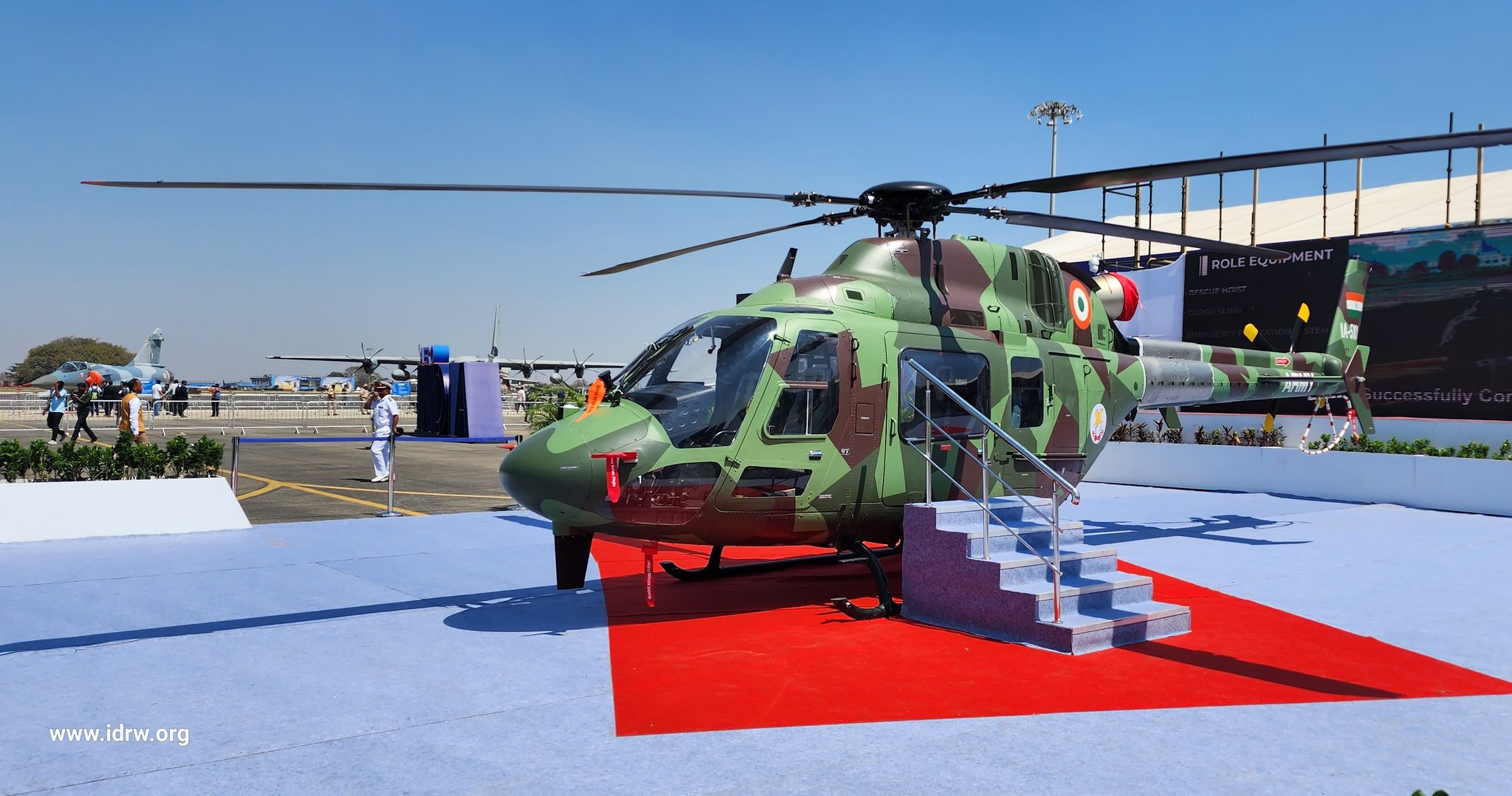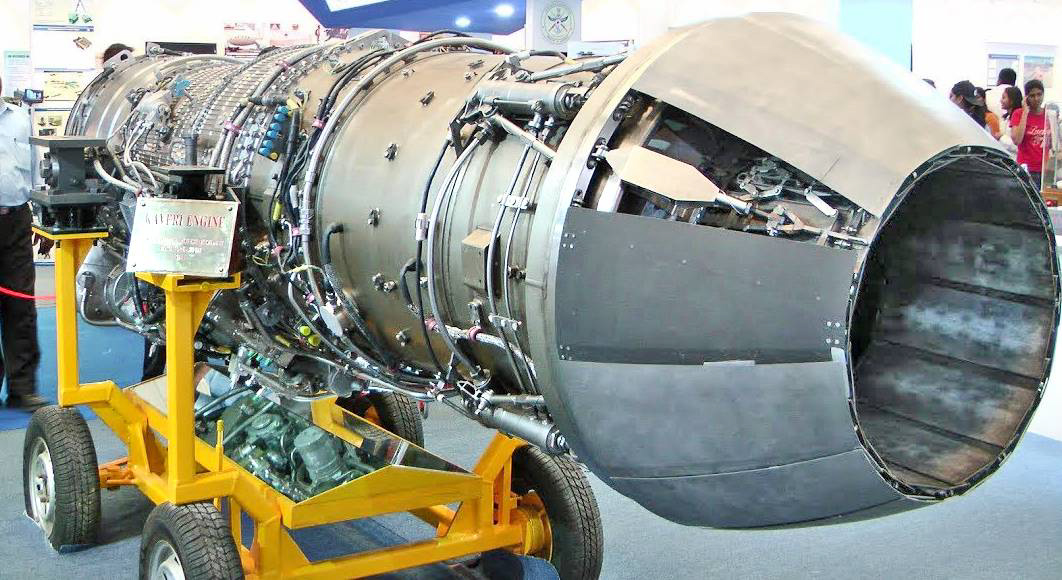SOURCE: AFI


Bharat Electronics Limited (BEL), a Navratna Defence Public Sector Undertaking, has further solidified its position in the defense sector by securing additional orders valued at Rs. 561 crore since its last announcement on December 23, 2024. These new contracts underscore BEL’s pivotal role in India’s defense modernization efforts.
With these recent acquisitions, BEL’s order book for the current financial year (FY25) now stands at a significant Rs. 10,362 crore. This accumulation not only reflects the growing trust in BEL’s capabilities but also indicates a robust demand for its products within the defense sector.
Continue readingSOURCE: IDRW.ORG


India’s state-owned shipbuilding giant, Hindustan Shipyard Limited (HSL), is actively expanding its footprint in Southeast Asia, particularly targeting nations like Vietnam and the Philippines for defence cooperation. This move aligns with India’s broader strategy to position itself as a significant exporter and manufacturer of defence products, leveraging its expertise in shipbuilding and naval engineering.
Negotiations are currently in progress with the Vietnam People’s Navy (VPN) for submarine refits, showcasing HSL’s capabilities beyond domestic borders. This initiative not only strengthens bilateral defence ties but also underscores HSL’s technical prowess in handling complex naval projects. Similarly, HSL is exploring potential opportunities in the Philippines, aiming to extend its services and partnerships in the region.
Continue readingSOURCE: IDRW.ORG


In a significant step towards enhancing its maintenance capabilities and boosting the domestic aerospace sector, the Indian Air Force (IAF) has decided to outsource the repair and overhaul (ROH) of its Mi-17 V5 helicopter engines to private Indian firms. This move is expected to not only help the IAF keep pace with the maintenance requirements of its growing fleet but also foster the growth of the aerospace and defense industry in India.
The IAF has issued a Request for Proposal (RFP) for the overhaul of 50 Mi-17 V5 helicopter engines. The project is open exclusively to Indian firms, which signals a significant push towards self-reliance under India’s “Make in India” initiative. According to sources, the engines will be overhauled within India, and they will not be sent abroad for maintenance, marking an important shift towards boosting domestic capabilities.
Continue readingSOURCE: AFI

The Indian Navy’s recent agreement to procure 26 Rafale M fighters from France marks a significant step not just in bolstering its naval air fleet but also in setting a benchmark for the development of indigenous aircraft like the Twin Engine Deck-Based Fighter (TEDBF). This deal, valued at approximately $7 billion, provides a unique opportunity for the Indian Navy to learn, adapt, and innovate, potentially leading to a domestically developed fighter that could match or even surpass the capabilities of the Rafale M.
With the Rafale M, the Indian Navy gains direct exposure to a state-of-the-art, carrier-capable fighter jet. This acquisition allows naval aviators to understand the operational nuances of a multirole, maritime fighter, providing insights into what is required in terms of performance, durability, and versatility in naval combat scenarios. These operational experiences will be invaluable for setting the performance parameters for the TEDBF.
Continue readingSOURCE: AFI


In an unexpected turn of events, a Hermes 900 drone, locally known as Drishti 10, which was in the midst of acceptance trials for the Indian Navy, crashed off the coast of Porbandar, Gujarat. The incident occurred while the drone was being operated by the vendor, Adani Defence and Aerospace, under circumstances where it lost communication, leading to the crash.
The Hermes 900, or Drishti 10 as it is designated in India, is a medium-altitude long-endurance (MALE) unmanned aerial vehicle (UAV) manufactured by Adani under a license from Israel’s Elbit Systems. This UAV is designed for intelligence, surveillance, reconnaissance (ISR), and has a significant role in enhancing India’s maritime and border security capabilities.
Continue readingSOURCE: AFI


In a recent statement, Chief of Army Staff General Upendra Dwivedi has shed light on the next steps for the Zorawar light tank following its high-altitude trials. The trials, conducted in the challenging terrains of India’s northern borders, have been pivotal in assessing the tank’s performance under extreme conditions.
General Dwivedi emphasized that while the tests have been largely successful, the Army has recommended additional improvements and modifications. These suggestions stem from the experiences and data gathered during the trials, aiming to enhance the tank’s capabilities for high-altitude combat scenarios, particularly in regions like Ladakh.
Continue readingSOURCE: AFI


In a strategic move aimed at expanding its defense exports, India is preparing to officially offer its indigenous Light Combat Aircraft (LCA) Tejas, armed with the forthcoming BrahMos-NG anti-ship missiles, to the Indonesian Air Force. This combination deal is poised to address Indonesia’s critical need for enhanced maritime surveillance and defense, given its expansive maritime domain.
Indonesia, with the world’s sixth-largest exclusive economic zone (EEZ) spanning over 6 million square kilometers, places a high priority on safeguarding its maritime sovereignty against violations. The integration of the LCA Tejas, a lightweight, multi-role fighter aircraft, with the BrahMos-NG, a miniaturized version of the renowned BrahMos missile, offers a potent solution for monitoring and defending these vast waters.
Continue readingSOURCE: AFI


Pakistan’s air force is on the cusp of a significant enhancement, with advanced discussions underway with Turkey to establish a production facility for the fifth-generation stealth aircraft, TAI Kaan, within the country. This move signifies a strategic leap in Pakistan’s defense capabilities, aiming to produce a local variant of this cutting-edge stealth jet.
The initiative comes at a time when Pakistan is also in talks to acquire 40 Shenyang J-35 stealth fighter jets from China, intended to modernize its air fleet by replacing aging F-16s and French Mirage fighters. According to a Turkish media report, the discussions with Turkey extend beyond mere exports, focusing on joint development ventures, including helicopters, which underscores a commitment to deepening defense technology collaboration and industrial partnerships.
Continue readingSOURCE: RAUNAK KUNDE / NEWS BEAT / IDRW.ORG


In a significant move towards bolstering India’s indigenous aviation capabilities, the Indian Air Force (IAF) has voiced robust support for the co-development of a new jet engine under the Advanced Medium Combat Aircraft (AMCA) program. However, the latest developments indicate a strategic shift in the approach to this ambitious project.
The plan now involves partnering with a foreign Original Equipment Manufacturer (OEM) to design the core of the engine, while Indian scientists and engineers focus on developing the low-pressure (LP) side of the engine. This collaboration aims to leverage international expertise for the more complex aspects of the jet engine, particularly the combustor core and high-pressure components, which are critical for performance and efficiency.
Continue readingSOURCE: RAUNAK KUNDE / NEWS BEAT / IDRW.ORG


Hindustan Aeronautics Limited (HAL), the Maharatna defence Public Sector Undertaking (PSU), is making significant strides towards securing a contract for the supply of Light Utility Helicopters (LUH) to the Indian Army and Indian Air Force. The contract is expected to be signed in the second quarter of 2025, marking a major step towards replacing the aging fleet of World War II-era Cheetah and Chetak helicopters.
The LUH is designed and developed by HAL’s Rotary Wing Research and Design Centre, with the goal of addressing the operational requirements of the Indian Army Aviation Corps and the Indian Air Force. The helicopter has already received the Initial Operational Clearance (IOC) for the Indian Army from the Centre for Military Airworthiness and Certification (CEMILAC) in February 2021, a milestone that has paved the way for the ongoing finalization of its certification.
Continue readingSOURCE: RAUNAK KUNDE / NEWS BEAT / IDRW.ORG


At the Annual Press conference held at the Manekshaw Centre in New Delhi on Monday, General Upendra Dwivedi, the Chief of the Indian Army, made a significant announcement regarding the Army’s artillery modernization efforts.
General Dwivedi revealed that the Indian Army is poised to significantly enhance its firepower with the procurement of the Advanced Towed Artillery Gun System (ATAGS). He stated, “If everything goes as planned, we hope to sign a contract for approximately 307 ATAGS, worth around ?8,000 crore, before the end of this financial year.”
Continue readingSOURCE: AFI


The Gas Turbine Research Establishment (GTRE), a key research organization under the Defence Research and Development Organisation (DRDO), has confirmed significant advancements in its Dry Kaveri Engine, which boasts 75% commonality with the original Kaveri engine. The improvements made in the Dry Kaveri have addressed many of the challenges faced by the Kaveri, ensuring its readiness for future defence applications, including the development of cutting-edge unmanned combat aerial vehicles (UCAVs) for the Indian Air Force (IAF).
One of the key highlights of the Dry Kaveri Engine is the substantial progress made in overcoming the previous limitations faced by the Kaveri engine. GTRE has confirmed that all the major issues of the original Kaveri engine have been rectified in its dry variant, making it a more reliable and efficient propulsion system. Dry Kaveri has been subjected to rigorous testing, and according to GTRE, the engine has performed admirably, showcasing its capability to meet the demanding requirements of future defence platforms.
Continue readingSOURCE: AFI


The latest iteration of the Hindustan Aeronautics Limited (HAL) CATS Warrior, showcased as a full-scale demonstrator, has introduced several significant modifications aimed at enhancing performance and stealth capabilities. These changes reflect HAL’s commitment to advancing India’s indigenous drone technology, particularly for the Indian Air Force’s (IAF) needs.
One of the most apparent alterations in the new CATS Warrior model is the redesign of the air intake. The earlier designs featured a more angular, stealth-focused intake, which has now been replaced with a smoother, curved design. This change appears to slightly compromise the stealth aspect, as the engine might be more visible than in previous models, potentially increasing radar cross-section. However, this redesign is not without its benefits.
Continue readingSOURCE: AFI


In a recent development on social media, particularly on the platform X (formerly Twitter), handles believed to be backed by Pakistan’s Inter-Services Intelligence (ISI) have initiated a misinformation campaign targeting India. Among the claims made by these accounts is a particularly bold assertion that “Bangladesh has reclaimed 1,008 km² of territory occupied by India during recent border clashes.”
This claim, which lacks any substantiation from official sources or independent verification, is part of a broader strategy to spread disinformation and stir up anti-India sentiment. The narrative being pushed suggests a scenario of territorial shifts following supposed border skirmishes, an event that has not been reported or confirmed by any credible news outlet or governmental body from India, Bangladesh, or international observers.
Continue readingSOURCE: AFI


Astr Defence, an emerging name in India’s defense manufacturing sector, has announced that the production of its latest product, the Phantom pistol, is now in full swing. This compact firearm, which comes equipped with an innovative red dot sight, marks a significant step forward in providing Indian civilians with high-quality, home-grown self-defense options.
The Phantom pistol has been designed with both aesthetics and functionality in mind, offering a sleek profile that does not compromise on capacity or accuracy. The inclusion of a factory-calibrated red dot sight is particularly noteworthy as it positions the Phantom as India’s first pistol with such a feature, enhancing shooting precision and reducing the time needed for target acquisition.
Continue reading